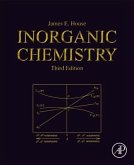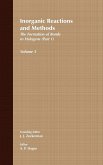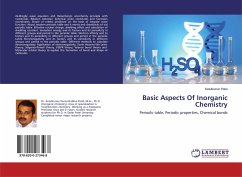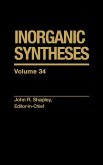Inorganic Chemistry, Second Edition, provides essential information for students of inorganic chemistry or for chemists pursuing self-study. The presentation of topics is made with an effort to be clear and concise so that the book is portable and user friendly. The text emphasizes fundamental principles-including molecular structure, acid-base chemistry, coordination chemistry, ligand field theory, and solid state chemistry. It is organized into five major themes (structure, condensed phases, solution chemistry, main group and coordination compounds) with several chapters in each. There is a logical progression from atomic structure to molecular structure to properties of substances based on molecular structures, to behavior of solids, etc.
The textbook contains a balance of topics in theoretical and descriptive chemistry. For example, the hard-soft interaction principle is used to explain hydrogen bond strengths, strengths of acids and bases, stability of coordination compounds, etc. Discussion of elements begins with survey chapters focused on the main groups, while later chapters cover the elements in greater detail. Each chapter opens with narrative introductions and includes figures, tables, and end-of-chapter problem sets.
This new edition features new and improved illustrations, including symmetry and 3D molecular orbital representations; expanded coverage of spectroscopy, instrumental techniques, organometallic and bio-inorganic chemistry; and more in-text worked-out examples to encourage active learning and to prepare students for their exams.
This text is ideal for advanced undergraduate and graduate-level students enrolled in the Inorganic Chemistry course. This core course serves Chemistry and other science majors. The book may also be suitable for biochemistry, medicinal chemistry, and other professionals who wish to learn more about this subject area.
The textbook contains a balance of topics in theoretical and descriptive chemistry. For example, the hard-soft interaction principle is used to explain hydrogen bond strengths, strengths of acids and bases, stability of coordination compounds, etc. Discussion of elements begins with survey chapters focused on the main groups, while later chapters cover the elements in greater detail. Each chapter opens with narrative introductions and includes figures, tables, and end-of-chapter problem sets.
This new edition features new and improved illustrations, including symmetry and 3D molecular orbital representations; expanded coverage of spectroscopy, instrumental techniques, organometallic and bio-inorganic chemistry; and more in-text worked-out examples to encourage active learning and to prepare students for their exams.
This text is ideal for advanced undergraduate and graduate-level students enrolled in the Inorganic Chemistry course. This core course serves Chemistry and other science majors. The book may also be suitable for biochemistry, medicinal chemistry, and other professionals who wish to learn more about this subject area.
"Each chapter is well referenced and includes plenty of homework problems.for those advanced students who have completed physics and calculus, this would be an excellent resource for obtaining a thorough coverage of inorganic chemistry.Summing Up: Highly recommended." --CHOICE, August 2013
"In a textbook for a one-semester upper-level introductory course in inorganic chemistry, House.selects topics to provide essential information in the major areas of the field such as atomic and molecular structure, condensed phases, acid-base chemistry and solvents, coordination chemistry, ligand field theory, and solid-state chemistry." --Reference and Research Book News, February 2013
"In a textbook for a one-semester upper-level introductory course in inorganic chemistry, House.selects topics to provide essential information in the major areas of the field such as atomic and molecular structure, condensed phases, acid-base chemistry and solvents, coordination chemistry, ligand field theory, and solid-state chemistry." --Reference and Research Book News, February 2013








